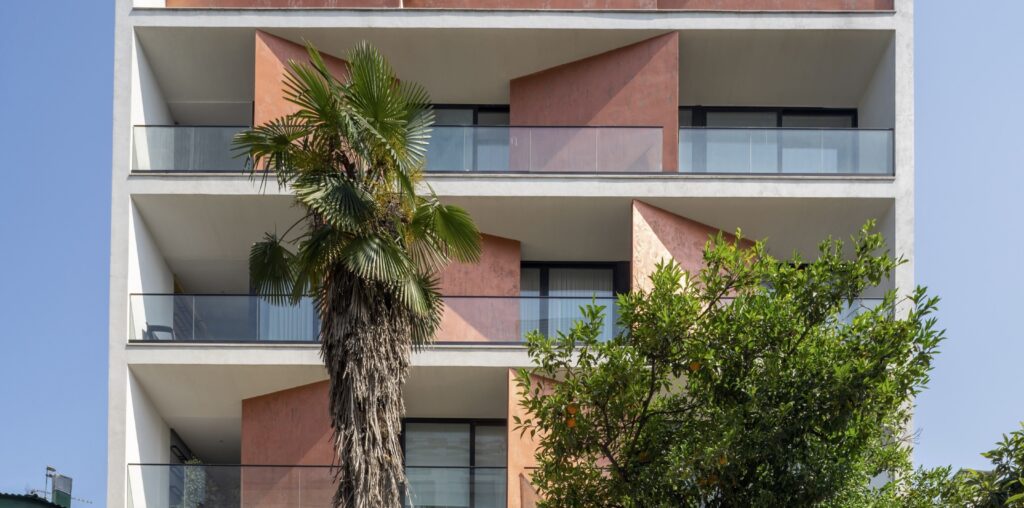

Text description provided by the architects. 146 Residential Building, located in the Golsar neighborhood of Rasht, is a residential apartment complex built on a 500-square-meter site. In terms of the project’s program, the ground floor was dedicated to parking, and the fifth floor was allocated to the project’s communal spaces, including recreational, fitness, and party rooms. This left the residential units to be single-unit apartments on the first to fourth floors.



The organization of private, public, and semi-public areas in the project was achieved through sectional intervention, creating two breaks and establishing three levels. Vertical connections were positioned in a way that the entry to the residential units was from the middle level. In addition to the entrance, the sitting room, kitchen, and service kitchen were placed on this level. The southern level, which was lower, housed a public living room and guest bedroom, while the upper level on the northern side was dedicated to three master bedrooms.



The level differences led to the creation of a mezzanine on the northern side between the ground floor and the first floor, which was assigned to storage and caretaker spaces. On the fifth floor, these level differences influenced the spatial arrangement of the communal areas and their spatial qualities. On this floor, the middle level was transformed into a courtyard with different levels, allowing access to the upper level (party room) and the lower level (fitness area). This courtyard also provided views and natural light for both zones.



Decisions regarding the facade often involve contradictions. For example, maximizing natural light and views calls for transparency, while privacy requires solidity. Balancing these dualities—such as transparency and solidity, as well as views from the inside versus outside (visibility and privacy)—are among the decisions that shaped the building’s facade. Therefore, the design aimed to order the facade elements, considering the following terms:
- as a dual-purpose element, the facade should not only be an exterior component, but also it should contribute to the “interior design” as well.
- The facade should evolve from a two-dimensional element into a three-dimensional architectural component with spatial qualities.

These considerations in the design allowed for a connection between the building’s facade and the intermediary space of the terrace, linked to the residential units. This was achieved by using partition walls in the terraces to control light, adjust the views, and simultaneously ensure privacy.

Adopting this approach resulted in a facade that is not just a definitive boundary separating the interior from the exterior or even a visual composition, but rather an intermediary space that facilitates the gradual transition from the interior to the exterior. This redefined the relationship between the residential space and the city through the urban facade.






